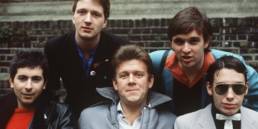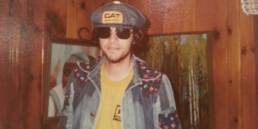
Despite the drumbeat of grim economic news up and down the state, Californians today no doubt are celebrating President Obama’s decision to allow states to enact anti-global warming auto emission standards stricter than federal rules. They’re also in a befuddled state of what-took-so-long deja vu.
For those who don’t remember, thick, noxious, russet-hued air pollution from the 1940s on used to blanket a good part of the Los Angeles area a goodly part of the year. When it dawned on desperate environmental officials here in the late 1960s that California needed to drop the hammer on the politically powerful, sales-oriented car companies by forcing them to slash ozone-forming compounds with regulations far sterner than the national limits, the industry rolled out the same arguments we’ve seen on the greenhouse gas front. “It’s not fair to do this state by state.” “It’ll cost too much.” “It’s technologically infeasible.” “Production chaos isn’t good for consumers.”
No matter how much southern Californians adored their cars, they began seeing the speciousness of these arguments, and that what the automakers seemed to care most about was the yearly sales ledger, not technological improvements that supposedly would drive certain models out of people’s price range. So in 1967, aided by some plucky California politicians, a young Ralph Nader and a well-timed radio documentary titled “A Breath of Death,” about smog’s pernicious stranglehold on the L.A. dream, the state built a congressional coalition with other increasingly polluted states and resisted efforts, primarily led by Representative John Dingell, the Michigan Democrat, to put so-called emission standards on the shelf.
And yes, it’s the same John Dingell! Not that it was easy. Not that the then Big Four automakers and their lobbyists didn’t try everything they could to blunt the attack on their tailpipe waste. Yet when 500,000 pro-waiver letters were dumped on the Capitol steps and dreary pictures of skyline-obliterated Los Angeles went up in the Rotunda, the tide began changing.
Wasn’t the health and well-being of millions of Americans in a state with higher industrial output than many countries worth a crackdown on the machine that made the state such a suburban idyll? The answer was a resounding yes. New York, Louisiana, Texas rallied to California’s argument, even if then Gov. Ronald Reagan figured the state had no shot.
On Nov. 2, 1967, when Obama and I were both little kids, the state became the first ever to win the authority to ramp up anti-smog standards, and there was jubilation from Sacramento to Santa Monica. Today, those standards, which many others have copied around the world, have helped make California cars 99 percent cleaner than they used to be.
You would’ve figured the American automakers would’ve embraced the message Californians sent. You might’ve thought they would’ve done what the Japanese car makers did: start building cleaner cars cleaner from the production lines up. For all that, Ford, G.M. and Chrysler apparently heard a different tune, and perhaps the distress they’re in now is another word for karma.
This Op-Ed was part of a New York Times online “Roundtable” presentation. For the entire Roundtable, go here.




